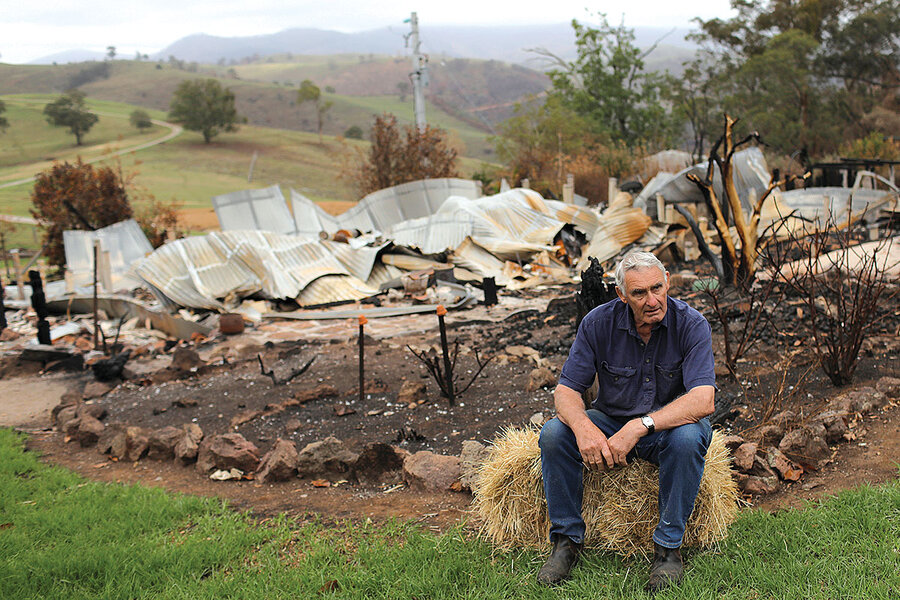Australia’s fiery trial
Loading...
History tells us that when Europeans first arrived in Australia, they were shocked by the indigenous people’s relationship with fire. Back in 18th-century England, fire was for hearths and forges, for heat and industry, but it was in many ways a power to be feared. Yet in this place, it was used to guide the landscape. Through a process that came to be known as “fire-stick farming,” indigenous communities had freed fire beyond its traditional European confines, delicately reshaping ecosystems to make them more resilient and productive.
For generations, such practices have been largely ignored or even discouraged. But for Australia and its American eco-twin, California, a new realization is dawning. A warming world requires new thinking. Or, in this case, perhaps, very old thinking.
In this week’s cover story, our Martin Kuz shares two insights from his reporting in Australia – the stress placed on the country’s legendary volunteer firefighting force, and the reemergence of fire-stick practices to combat wildfires before they start.
The fact is, both Australia and the American West have taken a largely European view of fire during the past two centuries, and particularly in more recent decades. Put simply, this is the idea that the best fire resiliency is built through human invention – a fortress mentality.
Following devastating Australian wildfires in 1939, “we had somehow felt that we had learnt how to survive fire, we’d built better homes, we were a more advanced technological society, and that we could just bunker down ... in an ordinary home and defend it and survive,” Tom Griffiths, a professor emeritus of history at the Australian National University in Canberra, told Australia’s ABC News recently. “And that clearly didn’t happen.”
The tale is just as true in California, if not more so. The California dream of 1950s-era Gov. Pat Brown was quite literally built on bending the landscape to human will, from water projects of spectacular audacity to the birth of modern suburbia. Prosperity was wrung from the land like a sponge.
So it has been no small irony that Mr. Brown’s son, Jerry, spent much of his two terms as governor in the 2010s seeking a new balance amid water shortages and historic wildfires. Indeed, Martin says his first, overpowering impression when stepping out of the airport in Sydney several weeks ago was that he was back in California in 2018. That was the year he covered the tragic Paradise fire.
The changing climate is forcing this new reckoning. Communities that have long been able to cope using a bunkered “European” view of fire are now under unprecedented strain, wondering how to address extremes that seem to be part of a new normal. Prescribed burns have been part of the firefighting toolkit for decades, but indigenous Australia offers the option of a deeper rethinking about how we approach fire. Can fire truly be embraced as a means of care rather than feared as only destructive? The answer is not likely a total solution. But it is possibly one of the ways forward.








